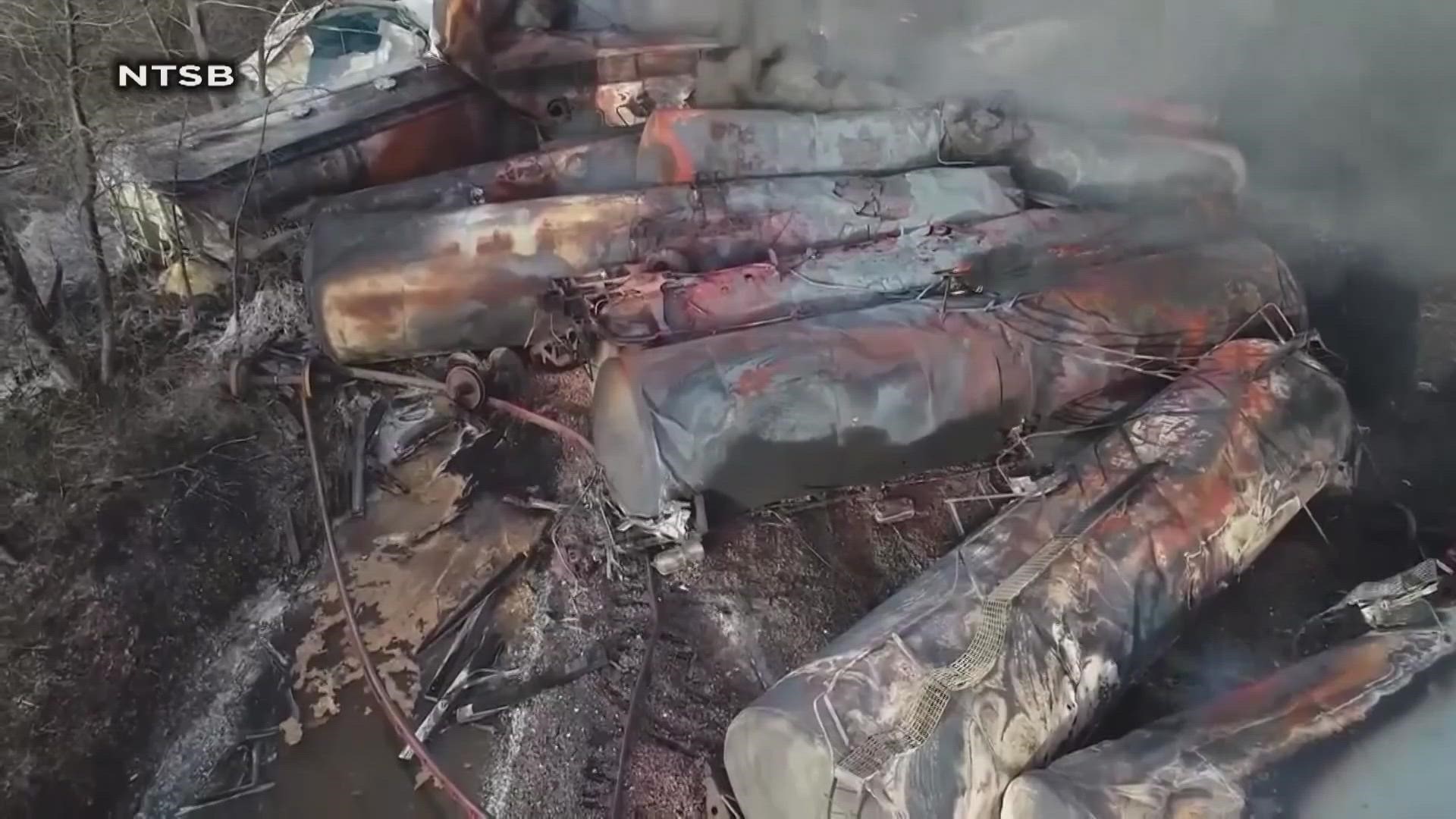EAST PALESTINE, Ohio — Testing results returned to the Ohio EPA on Wednesday show that the municipal water in East Palestine is safe to drink nearly two weeks after a train carrying hazardous materials derailed near the village, according to Gov. Mike DeWine.
The water testing results show no detection of contaminants in raw water from the five wells that feed into East Palestine's municipal water system, DeWine said. The results from the combined, treated water also showed no contaminants associated with the derailment.
The Ohio EPA is confident that the municipal water is safe to drink, according to the governor.
The five wells that feed into East Palentine's water system, which supplies drinking water for most residents, is located about one mile away from the train derailment.
Those who have private water wells may be closer to the surface than the municipal water wells. The Ohio EPA recommends those who receive drinking water from private wells to schedule an appointment for well water testing by an independent consultant.
Anyone who wants to schedule testing for their private water well can call 330-849-3919. The Ohio Department of Health encourages those with private wells to use bottled water until testing results are returned.
No one was injured when the 50 cars derailed in a fiery, mangled mess near the village on Feb. 3. Following the crash, officials opted to release and burn toxic vinyl chloride from five rail cars, sending flames and black smoke into the sky.
Contaminants from the derailed cars spilled into some waterways and were toxic to fish, but officials said in recent days that drinking water in the area has remained protected.
East Palestine's wells are at least 56 feet below the surface and are covered by a solid steel casing that protects the water from contamination, DeWine said. Before drinking water is made available to the public, water from the five wells is combined at a water treatment plant and treated.

